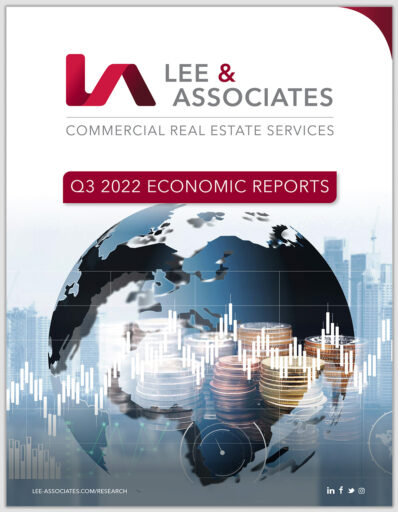Q3 2022 Economic Report Released
 GDP GROWTH
GDP GROWTH
The nation’s gross domestic product grew at an annual rate of 2.6% in the third quarter, a reversal from six previous months of decline. Although the Commerce Department data was better than forecast there are expectations the economy will weaken under the strain of high inflation and rising interest rates.
There were third-quarter gains in exports, consumer spending, nonresidential fixed investment and local, state and federal government spending. These increases were partly offset by declines in residential fixed investment and private inventory investment.
There were increases in exports of goods and services. Leading contributors to the increase were industrial supplies, petroleum and other nondurable goods and nonautomotive capital goods. There also was improvement in travel and business services. READ MORE>
EMPLOYMENT
Although employment growth nearly equaled expectations in September, the jobless rate edged down despite efforts by the Federal Reserve to slow the economy. Companies filled 263,000 non-farm positions, fewer than the Dow Jones estimate of 275,000, and the nation’s unemployment rate settled at 3.5%, returning to its July level.
In its September employment report, the Labor Department also said that average hourly earnings rose 0.3% on the month and increased 5% from a year ago. Leisure and hospitality led the gains with an increase of 83,0000 jobs but the sector remains 1.1 million jobs short of the level of February 2020.
Health care filled 60,000 positions. Professional and business services gained 46,000 jobs. Manufacturing added 22,000 positions. Construction was up 19,000 jobs and wholesale trade climbed by 11,000. READ MORE>
MONETARY POLICY
The Federal Reserve raised its federal funds rate by .75% in late September to 3.25% and sent clear signals that to fight persistently high inflation there will be one and perhaps two more rate hikes ordered by the end of the year.
The Fed’s latest projections call for a 4%-4.5% interest rate target this year, rising to the 4.5%-5% range in 2023 with no rate cuts next year. The Fed reaffirmed its position that reducing inflation is more important than growth. And its continued tough stance increases the odds, in the view of the markets and many economists, of a U.S. recession next year.
“The Federal Reserve is choosing between the lesser of two evils – take a recession with a rise in unemployment today or risk having more corrosive and entrenched inflation taking root,” KPMG’s Diane Swonk told the Wall Street Journal. READ MORE>
GLOBAL ECONOMY
The global economy is encountering a number of turbulent challenges. The outlook is most affected by inflation, which is the highest in decades, and tightening financial conditions, Russia’s invasion of Ukraine and the lingering Covid pandemic.
The International Monetary Fund has reduced its forecast for world economic growth this year 20 basis points to 3.2%. The IMF expects expansion of 2.7% in 2023. Global growth hit 6% in 2021.
The slower growth is being engineered by central banks and governments aiming to reduce inflation and normalize monetary policies that were disrupted by Covid. Most directly is this involves tightening the money supply, which is driving up the cost of credit. READ MORE>
